#costume taxonomy
Text

I got this ask on main but thought I'd pick it up here, my comics history/fashion ramble blog. I'd been wondering this exact same thing recently, and Google initially wasn't much help—Rocketeer replica jackets describe themselves only as "Rocketeer jackets" and the one Lobster Johnson cosplay thread just suggested ordering one of those.

The most curious part is the double seam and horizonal row of buttons that mark out the entire front as possibly being an unbuttonable "bib", like a plastron front. (Please don't ask how late in the game I worked out that "plastron" is the right word for that.)
The closest genuine Golden Age example of a plastron jacket I found was the military tunic style uniform of Blackhawk, created in 1941.

(Pics from the '52 movie serial (right) really show how awkward it is to combine open lapels + plastron. On a double breasted coat, that chest panel IS the bottom lapel, folded shut.)
Here's the thing: This outfit mirrors that of the Nazi ace pilot he fights in the origin issue, von Tepp (middle). And compare further to the far right: real life WWI flying ace Manfred von Richthofen, AKA the Red Baron, in imperial German Uhlan (lance cavalry) uniform.

"The Germans had designed such great costumes, we decided to use them ourselves," co-creator Cuidera is quoted as saying in Steranko's History of Comics, which (more dubiously, in my opinion) compares the look to the Gestapo or SS. Breeches or jodhpurs weren't strictly a Nazi thing at the time, but they do add to the overall effect.
Compare two other military tunic themed costumes from 1940, on Captain Marvel and Bucky Barnes. These are asymmetrically buttoned, and switch to a more classic circus strongman look below the waist.

But somewhere around 1975, with the Invaders book, Bucky gets a buttoned bib! There's something infectious about it—the symmetry, maybe. (Even re: the characters we started with; Mignola didn't draw Lobster Johnson with buttons down the right side, but every artist after does. And Spider-Noir wore a sweater under his coat until Shattered Dimensions introduced the double-breasted vest.)
If it didn't reach his belt, Barnes' button-on front + shirt collar combo would resemble a bib-front western shirt, like the one that became the Rawhide Kid's signature look in '56. (Or Texas Twister's in '76.)
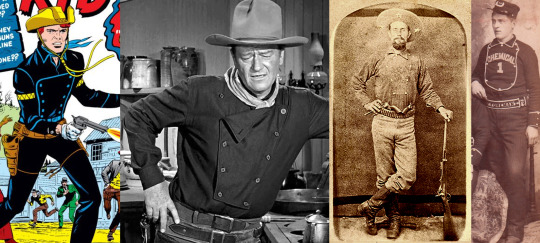
This shirt entered the old-West-obsessed public imagination in the 1940s/50s largely because John Wayne wore it in several cowboy movies. In reality it was rare among cowboys, more common with firefighters and civil war era militia.
Military tunics, Western shirts, alright, but does anything match the style and material and era, or are these jackets a total anachronism? I tried looking into 1930s leather flight jackets and was surprised when the closest-looking results were marked as Luftwaffe.
It took me a bit to work out why: USAF and RAF issued standard flight jackets with a center closure. The Luftwaffe instead let their pilots buy non-standardized ones. The 'weird' double-breasted black German flight jackets were in fact fairly normal (but repurposed) motorcycle racing jackets.
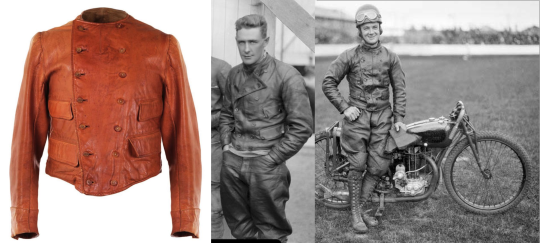
Far left is an English biker's jacket that dates back to the 1920s. Even without the bib, this may be as close as you'll get to an authentic Rocketeer. The jodhpurs were pretty common to complete the look. (What was an early motorcycle anyways, if not a weird metal horse?) The first biker jacket with the now iconic off-center diagonal zip was designed in America in 1928 and yet as far as I can tell, not a single actual pre-war pulp hero wore one.
The greatest weakness of this post is that I haven't been able to find any of these artists' notes on how, exactly, they arrived at similar versions of this iconic Pulp Front Panel Jacket. I'm sure I've missed some things. But as far as I can tell, this jacket is an odd bit of convergent stylistic evolution from the above influences that's picked up enough momentum to now be self-perpetuating.
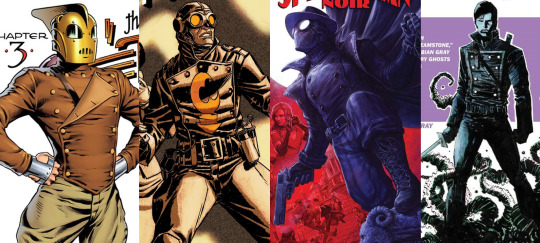
The problem with pulp heroes is that for the most part, they just wore clothes. The appeal of this jacket is actually very similar to what the 1940s thought the appeal of the bib-front shirt in westerns was: It's alien enough to feel "old". It looks like something invented before zippers or synthetic fabrics. It looks formal and militant but also renegade, rebellious. It also looks a little mad-sciencey*. It's a costume, but you can nearly fool yourself into thinking the past was weird enough that you could find something this cool on the rack.
If I wanted to end on some grand point, I could try to argue that there's a thematic throughline between fascist fashion, John Wayne movies, and throwback pulp. A manufactured aesthetic valorizing the violence of a fictional golden age... but I think the noir stylings of the post-Rocketeer comics in this lineup mean that, at least on some level, they know the "good guys" didn't dress like this.
*If I had another couple weeks of time to burn, I'd try to trace the visual history of the Howie coat in popular culture and investigate its possible connections to this. Alas, I do actually have a life.
#thank you for reading. also don't read golden age blackhawks the racism is awful even by era standards.#comics history#costume taxonomy#<- forgot I had that tag.#not to be like ''in MY favorite comics...'' again but may I point out that Hellboy and Robo and Tom Strong just wear... clothes#like. yknow. A pulp series that had confidence in itself rather than trying to cosplay as eras it thinks were cooler might do-#[I am yanked offstage before I can restart that rant]#the rocketeer
122 notes
·
View notes
Note
For a writing prompt: maybe something with Luigi and polterpup? Or just Luigi and ghosts in general. The fact that ghosts are Real and Present in that world has always been super fascinating and a little upsetting to me haha. Could be as light or as angsty as you wish I just think Luigi being terrified of ghosts and having to (or in polterpup’s case, choosing to) be around them constantly is a fun concept to toy around with.
Apologies this took so long, anon. I vastly underestimated the demands of my travel schedule over the past few weeks. Oof. But now we're back!
Minor TWs in this one for general talk of death, existentialism, and broad references to both animal and child death (nothing graphic, nothing extreme, no on-screen death).
~~~~~~~~~~~
Of Ghosts and the Afterlife (Luigi’s Mansion 1)
Luigi didn’t like to think about death.
Not that there was much he could do about it. Death was as inevitable as a subway car with broken air conditioning on a hundred-degree day.
There was no such thing as the afterlife, Luigi having long ago abandoned the faith his brother and what remained of their family clung to, a practice more cultural than spiritual, steeped in the mores and traditions of a country and people he shared little in common with beyond his last name and an untamable mane of wavy, thick brown hair.
For Luigi, death was death - game over, end of the line, see you never. A philosophical problem he didn’t enjoy contemplating, but one he could easily shove into a forgotten closet of his subconscious, the more pressing concerns of his daily life taking up his mental energies, banal things like scraping up enough plumbing jobs to pay the rent, dealing with corroded spark plugs in the repair van, and being forced make a meal of the questionable meatball subs from the corner bodega.
Death was death. Religion was religion. And ghosts were…a fairytale, a folklore conjured to rationalize away the heavy weight of existential dread. That, or something used as a cudgel, to keep people on the side of moral righteousness, lest they be doomed to walk the earth for all eternity in the shadows of existence.
Ghosts were a thought experiment. A fun diversion in a cramped Bensonhurst studio, the heating bill long unpaid, he and his brother buried under a set of fraying blankets, their father’s hefty industrial flashlight in hand, competing to see who could scare the other the most as the D Train rattled its metal bones past their window at two in the morning.
Mario was good at stories. (Mario was good at everything). And it wasn’t that Luigi was afraid of the spirits his brother would describe in gruesome detail, the way they’d seep through cracks and keyholes, wrapping their grey, misty arms around skinny, lost children who kept too many secrets. No. He couldn’t be afraid because ghosts weren’t real.
Not until he had been unceremoniously dumped into the Mushroom Kingdom, that was.
He could deal with the existence of Boos. Well, that wasn’t entirely true, but he could at least assign them a category outside the paranormal. Boos were just another strange species, a bunch of floating marshmallows that looked like ghosts and acted like ghosts, but in no way were actual ghosts. Boos were something real, something alive, but beyond Earth’s limited taxonomies, just like everything else in this impossible world of talking mushrooms and tyrant turtles and evil wizards and booted dinosaurs and a million-and-one things that could leap out with fangs or fire or spikes and kill you at any moment -
Death, he had once nervously told his brother over a campfire on the outskirts of Toad Town, felt like it had become a way of life.
The letter had arrived on a crisp autumn morning, the early sunlight peeking through the gaps of Luigi’s drawn curtains. He remembered thinking it was a clean kind of light, unsullied by the drudgery of heavy coats and thick scarves, of greying slush and oily puddles pooling in the gutter, cigarette butts bobbing up and down like the stained buoys off Brighton Beach. Life had been, if not normal (he didn’t think he’d ever consider his existence in the Mushroom Kingdom normal), at least less chaotic than usual. There had been no invasions, no kidnappings, no pleas from neighboring kingdoms for help. For the first time in a long time, his daily routine was…pedestrian. A little boring, even. It was a nice change of pace.
He should have known better. Did know better.
No one gave away mansions.
Yeah, and I’m sure they also have a bridge in Brooklyn they’d like to sell me he had muttered, crumpling up the notice, tossing it into a dented, mushroom-shaped garbage pail without another look as he groped for a gurgling coffee pot.
Three days later, a short, wiry old man was thrusting a souped-up vacuum into his hands, blathering all kinds of nonsensical instructions about ectoplasm and strobe lights and hearts and all that Luigi could think through the high-pitched static descending on onto his brain is that my brother is in danger and holy shit this entire mansion is filled with actual, real ghosts.
There was no time to wrap his head around the metaphysics of it all, the very real danger of being killed by an entire army of irate specters overriding any considerations as to the how or why of the entire situation. Ghosts apparently existed, not only as Boos, but as colorful, globulous forms, as cantankerous old knitting women, as mechanical, murderous toy soldiers, and worst of all, as small children and even screaming babies, the terrible implications of which rattled around Luigi’s already frenzied consciousness as he sucked the heart from a wailing infant, in all likelihood murdering it a second time. (A hazy memory had surfaced, a small, doll-like figure laid on a cheap, linoleum kitchen table, legs unstable as a small cadre of extended relatives wept and laid kisses on the child’s forehead. Forty and eight hour, their great-grandmother had commanded in broken English. To be sure the true dead. Spirito.)
It had been less than twenty-four hours, he reminded himself. Mario wasn’t dead. Or undead. Or whatever. Not according to tradition, and certainly not according to Luigi’s empirical observations (which seemed to be holding less and less weight as the paranormal evening drew on). No, he had seen his brother through the marble fangs of the dragon’s head. He was in the painting, banging for his life against an invisible prison of oils and canvas, his mouth open in a silent scream.
A victim of magic, but not a ghost.
Not if Luigi had anything to say about it.
He ran. Up broken, splintering sets of stairs; down dimly-lit corridors with threadbare rugging; through trap doors and flocks of toothy, golden bats, vacuum hose at the ready, sucking away at anything even resembling a ghost (how many curtains, how many dresses and bedsheets had he whisked into shreds all because of the ripple of a breeze or a trick of the light?)
He fought his way through chamber after chamber, slurping phantasms from earthly existence, unwilling to consider just what he’s damning his enemies to, if he’s killing them again, if they can feel pain or remorse, if this whole situation is maybe a figment of his imagination and in reality he’s back in Brooklyn, or worse, committed to a padded cell in Bellevue, colorful apparitions dancing on blank, white walls, the evidence of a broken mind.
He found his brother’s portrait hung in a baroque, gilded antechamber, the room something as alien as the specters he had been fighting, his grimy boots sinking into blood-red, lush carpeting as gems and pearls and other precious-looking stones twinkled in the light of a silver candelabra.
The keeper of Mario’s canvas prison turned to greet him, a gargantuan Boo with a jeweled crown named “King Boo” - an uninspired moniker if there ever was one - who pontificated at length, swearing vengeance on both Mario and Luigi, demanding reparations in blood and soul for crimes Luigi couldn’t even begin to understand, no less remember.
Did I kill him? Luigi had panicked, rooted to the spot, Poltergust in hand as the Boo continued his long-winded diatribe. Is that why he’s a ghost? Did Mario do something? Luigi tried not to think too hard about the ethical dilemmas of their adventures, of their roles as protectors of the Mushroom Kingdom. Sure, people got hurt, that was the nature of the beast, but…
It didn’t matter, not when King Boo conjured a several-story tall likeness of Bowser, whisking Luigi through a portal to the stark rooftop of the dilapidated mansion to engage in a twisted game of cat-and-mouse (ghost-and-plumber), the giant Koopa puppet doing its best to stomp Luigi into a fiery, broken heap of ashes.
He escaped with his life. That, and the promise of retribution from beyond the grave, King Boo spitting all forms of vile epithets and visions of eternal pain as Luigi sucked the last of his bulbous form into the squealing, smoking Poltergust.
When Mario was spat from E. Gadd’s printing machine, tumbling across the floor in a confused pile of limbs - his brother, real, corporal and definitely not dead - Luigi didn’t know whether to laugh or cry.
He never wanted to see - never wanted to think about another ghost again in his life.
Of Dogs (Luigi’s Mansion 2)
He supposed it made sense. In a way.
After all, if there were Boos, if there were ghost adults and ghost children and ghost babies - there were bound to be ghost dogs. Maybe ghost cats, as well. Hell, maybe an entire ghost civilization living (dying?) in tandem with his own flesh-and-blood world.
He hated the idea. It trampled on every tenet of thermodynamics he had carved into his brain at the age of ten, made a mockery of the physics and chemistry and engineering that had carried him through adolescence and into adult life.
The Mushroom Kingdom - that was something he had at least managed to rationalize, had begun to construct a loose schematic for, notebooks upon notebooks filled with messy diagrams and rambling equations, an inadequate translation to his Earth-bound science, but one that allowed him to find some kind of solid footing in this incomprehensible new dimension.
Ghosts did not fit into his neatly constructed template.
Least of all, ghost dogs.
Of course, the dog had to eat the key and run away, leading Luigi on a wild goose chase (he dearly hoped there was no such thing as ghost geese). He ran pellmell through gardens, through labs, through a series of mansions and other haun -
Other decidedly creepy spots in the Evershade Valley. Places where he was left to battle groups of angry, globulous…shadows. Specters. Phantoms. Spirits. Poltergeists.
Ghosts.
Again.
He would have been angry if he weren’t so terrified.
The dog, as much trouble as he was (He? She? Did it matter?) had at least not fallen under the spell of the Dark Moon, making him the Least Frightening Ghost of this particular run-in with the ethereal undead and King Boo.
And Luigi could almost get himself to…well…maybe not like him, but tolerate him. Even though the dog ate his keys, left messy trails of crumbs and soggy, half-eaten baguettes, slobbered all over Luigi’s pants, and managed at least once to urinate in a public fountain, a phenomenon Luigi would be puzzling over for months after the fact.
Best of all, the dog, unlike almost everyone else here, wasn’t bent on killing him.
He was just a normal dog.
Who happened to be a ghost.
Luigi wondered if he had had a family in life. Children to grow up with. A big house with a yard. He acted more like a puppy than an adult dog, his exuberant chaos reminiscent of the little Golden Retriever pup his second cousins had gotten when their family moved out to the Island. Oyster Bay, he remembers, real fancy stuff. Sal and Tony’s house had had trees. A garage. Separate bedrooms. He and Mario had begged for a dog for weeks after visiting, shuffling furniture around their tiny-windowed room, marking out places in purple chalk for the dog’s water bowl, his kibble, his toys.
Their father had grunted at the proposal, noting the two brothers would have to sleep in the same bed to make the space for their imaginary new pet. This ain’t no place for a dog, you two. You want animals, get a job with the pound. What, you’re still going to beg? Santa Maria. You two share that bed for a week without beating each other up and then come back to me. But I don’t like the odds. You boys haven’t shared a bed since you were seven. Five’ll get you ten you last forty-eight hours before someone’s fist is in the other one's face.
They lasted three whole days before Luigi had planted his foot in Mario’s kidneys at two in the morning.
They never saw the dog in Oyster Bay again.
A car accident, real unfortunate stuff, Aunt Maria had told them later.
The memory haunted Luigi as he unholstered the Poltergust, forcing his fingers to twist dials and push at levers. He needed that key. It wasn’t just his life on the line if he failed.
He squeezed his eyes shut as he sucked the ghost dog into the machine, trying his absolute best to ignore the little whines and terrified yips of the struggling not-animal. After what felt like an eternity, he heard the tell-tale “pop” of the Poltergust, signaling his success in capturing yet another ghost, the silver key clanging to the cobble-stoned ground.
Luigi had never felt less heroic in his life.
I just think he wanted someone to play with, E. Gadd had commented offhandedly later, emptying the Poltergust's canister into the gigantic silver ghost vault with his usual detached efficiency, oblivious to the way Luigi's features had paled at the comment.
When he got word of the dog’s escape a few hours later, Luigi didn’t even try to deny his relief.
Of Half-Lives and Vengeance (Luigi’s Mansion 3)
Fatigue. Carelessness. Hubris. Naivete.
Or maybe it had just been sheer stupidity.
An invitation to vacation at an exclusive, luxury hotel, addressed to him.
Nice things never happened to Luigi. Or if they did, he could hardly enjoy them, waiting on tenterhooks for the other boot to fall.
The boot fell that evening. It was ghosts. Of course, it was. Nearly twenty floors of ghosts. At this point, he could say he was almost used to it, the creeping shiver up his spine, the gluey residue of ectoplasm which would leave him tattooed with ugly, mottled rashes for weeks on end.
Once again, he had to act as a one-man army against the mass of spectral, malevolent will. Once again, his brother had been trapped in a painting.
There were differences, of course. Polterpup was by his side, the ethereal puppy proving more loyal to Luigi than his fellow spirits. (Luigi could never say Polterpup was "his" in the way most pet owners would lay claim to a regular cat or dog. The ghost puppy had a disturbing tendency to disappear for weeks, sometimes months on end, only to make his return in the most startling manner possible, more than once sending Luigi screaming, flailing off his bed at some weird, inconvenient hour of the night. But for as much as Polterpup could have a "home" - Luigi's house was it).
Luigi also had the help of his pseudo-clone, Gooigi, a horrifying creation of E. Gadd's, an unholy combination of ghostly discharge (the nature of which Luigi did not want to know), coffee, and, Luigi's own biological samples. An impossible being with whom he shared an inexplicable telepathic connection, and if Luigi had had any semblance of a minute to consider what that all meant (was he part ghost now? Could Gooigi outlive him? Would he maintain that consciousness after death?) he would have likely run screeching into the night.
(The fact Gooigi had proven essential to his continued existence did not distract from the wildly dubious ethics behind Gooigi's creation, an issue Luigi was definitely going to have a long talk with E. Gadd about at some point. If he could manage to broach the topic without falling into a breathless panic).
But the most striking aspect of his third encounter with King Boo and his minions, something that wriggled at the base of Luigi's cerebellum as he fought floor upon gimmicky floor the largest array of ghouls he encountered yet, was the element of premeditation.
King Boo had easily disposed of Mario, the Princess, and the Toads during their first midnight encounter. Sure, Luigi had escaped down a laundry chute, chest heaving as he toppled onto a pile of dirty towels. But that shouldn't have posed an issue for this crazed version of King Boo, a being who could literally phase through walls.
Luigi should have been dead, or worse than dead, ten times over.
No, King Boo had decided to wait. To draw out the deep, sustained hum of terror far beyond its final breath.
Security cameras were posted everywhere in the hotel. Luigi had no doubt the ghostly tyrant was following his every move, watching, salivating as he fought and struggled against Egyptian gods and malevolent Mozarts, and bearded, Bayou beasts. (Were these the literal souls of the departed? Was Mozart truly in these walls? Or was this like a ghost Halloween, a once-in-a-deathtime opportunity to fulfill that longing urge to finally be someone who you will never be?)
(He remembers being six years old. Remembers dressing as his brother for Halloween, Luigi stealing Mario's iconic red t-shirt, his parents pleading with him to go as anything else - a spider, a rat, a baseball player - Luigi refusing each entreaty. The other boys aren't going to like it, Luigi, his mother had said, consonants slurring. You're going to get the snot pounded out of you, Dad had added a beat later).
(In the end, he had thrown an old floral bedsheet over his head, not even bothering to cut out eyeholes. I'm a ghost! Luigi had boasted. You're a loser, Vinny Malanga had laughed).
And worst part of it was, Luigi knew it. Knew he could turn any corner, go down any dark hallway and be met with that signature violet gemstone, that bladed, fanged smile ready to slam an empty frame down on his head and trap him for all eternity in oil and canvas.
Death waited in every shadow.
And King Boo was going to enjoy every minute of it.
Of Death (Epilogue)
Luigi thought he knew death. After three, separate encounters with buildings chock full of the undead, after countless hours spent in the company of the best paranormal researcher he knew (the only one he knew, admittedly), after providing part-time shelter for a genuine ghost puppy, after meeting his half-undead clone - Luigi considered himself, if not comfortable, at least conversant in the hows and whys of the afterlife.
One day, he tried to stop a wedding between a princess and a monster.
Death, he would learn, was only the beginning.
#hello there#ask legobiwan#luigi#polterpup#writing#the eternal struggle#i'm not sure WHAT this is guys#but enjoy luigi's mansion stuff with some luigi backstory thrown in#note luigi's halloween costume is based on something i did for real when i was an undergrad#just threw a sheet on my head and said ghost!#luckily it was music school and everyone was insane#yes the ending to this is 100% an spm reference#i had more material with dimentio but jt didnt fit with this so i cut it#lets just say i have a TAXONOMY of tje mario verse afterlife going
120 notes
·
View notes
Text
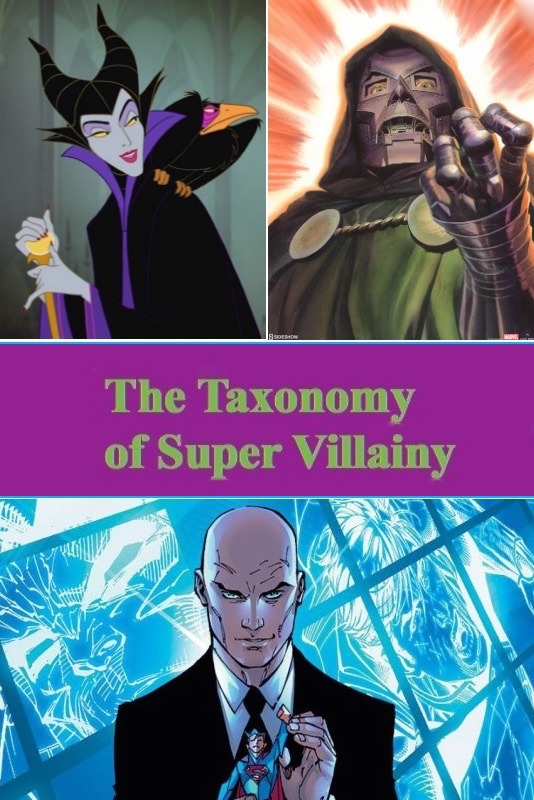
Introduction
There are many, many super villains in the realms of fiction, comic books, cartoons and movies. When encountering such villains, these costumed cads and dangerous dastards, it is of the utmost importance that one know the precise type of malefactor is at hand. While no two villains are exactly alike, as a whole these scoundrels can be roughly categorized into a systemic taxonomy; a classification based upon the qualities of threat, capability and ambition.
This taxonomy is sequential in respect to the level of danger, commitment and aspiration. It begins at a first rung with the lowly Goons, moving quickly to the dangerous Enforcers, then the mercurial Rogues, followed by the calculating Lieutenants and finally the Nemeses… the most dangerous villains of them all.
Goons
First let us look at the Goons. These are the minions, the henchmen and stooges who use their powers to do the bidding of a more sinister and scheming master.

Goons can be quite formidable, possessing a great deal of raw strength and power. Yet their lack of foresight, aspiration and direction leave them in the position of playing the role of pawns.
Whether it be the result of laziness, naïveté, psychological difficulty or some manner of deficiency, Goons are easily manipulated. They are frequently duped or cajoled into doing the bidding of others. Sometimes they will perceive themselves as being equals with those they serve. In truth, however, these misguided flunkies are almost always viewed as disposable... as mere vassals who will be sacrificed or simply discarded on a whim.

Criminal organizations will frequently have numerous henchmen who are nameless and interchangeable. What distinguishes a super villain Goon from the more garden variety lackey is their physical power and capacity for destruction. They possess all the raw ability to be a more substantial menace but none of the imagination, presentation or drive. They simply lack the je ne sais quoi needed to be a more fully actualized embodiment of super villainy.
And yet this does not make the Goon any less dangerous. Indeed the Goon’s fragile ego coupled with their destructive capability can lead to threats on par with a natural disaster.
Conversely, the Goon can sometimes be the most likely type of super villain to be turned, moved toward the path of heroism. Most Goons just want to be seen and valued, to garner a place where they feel they belong. More sophisticated villains will take advantage of this unmet need, offering the Goon a sense of purpose. If a hero can convince a Goon that they are being manipulated and offer a more authentic sense of validation, the goon may very well switch sides and become heroic.
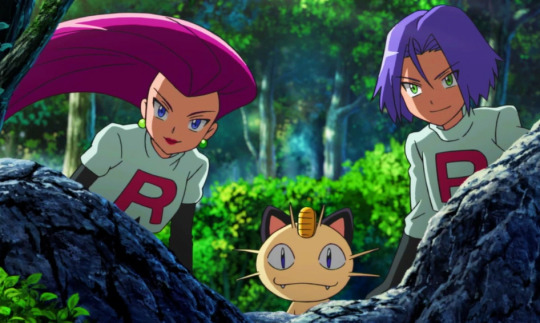
For the most part, however, Goons are rather satisfied with their lot. They are often simple souls with simple needs. Being a Goon affords a sense of direction and license to be destructive bullies.
The Enforcers
When the raw power of a super villain Goon is coupled with a heightened degree of shrewdness, confidence, avarice and capability, the end product is often The Enforcer.

These are the mercenaries, assassins and bounty hunters… the guns-for-hire who are brought in for a specific task (commonly the elimination of a hero). These villains are not interested in taking over the world, garnering power and influence, they just want to get paid.

Said payment is most often money... but prestige, thrills and a bolstering of one’s ego are also a commonly accepted currency. Sometimes Enforcers will be pitted against a specific hero and the simple opportunity to best that hero, to show themselves as the superior entity, is motivation enough to take on the job. They can be like big game hunters, in desperate search of a new and bigger trophy to add to their ever-growing collection.
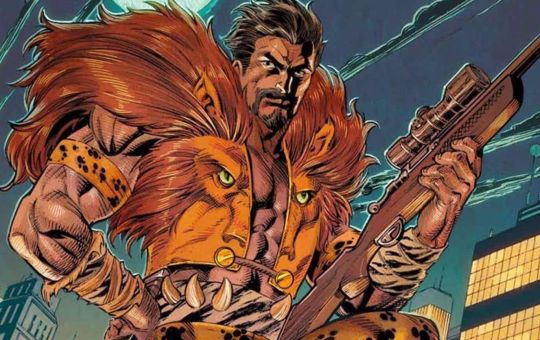
Some enforcers may be motivated by mere boredom. They tend to be thrill-seekers and super villainy is an irresistible rollercoaster that acts to quell the tedium. It is not uncommon for there to be a degree of sadism to the enforcer... even psychopathy. Their passion is doling out pain and destruction; they revel in being feared. They are dangerous and unpredictable and will endeavor to succeed at any and all costs. They are not to be taken lightly.

It is not unheard of for Enforcers to have underlings of their own, aides or minions who will assist in their schemes. Or they may work in conjunction with Goons. Yet their values are strictly mercenary. Their morals and philosophy are entirely for hire. Some Enforcers may adhere to their own, personalized code of conduct... yet it is a strictly idiosyncratic (and often malleable) matter.
Phrased simply, they are not individuals to be trusted; an Enforcer will turn on their employer the moment that it better suits their interests. Beware, my friends, Enforcers are danger incarnate...
Rogues
Rogues are outsiders, individuals who just do not fit in with the common and traditional conventionalities of a given society. They are misfits, freaks, square pegs in a world of round holes. Yet they also have power; they are capable, smart, ruthless and shrewd. They do not fit in, but they do not need to; they can force their worlds to accommodate to them.
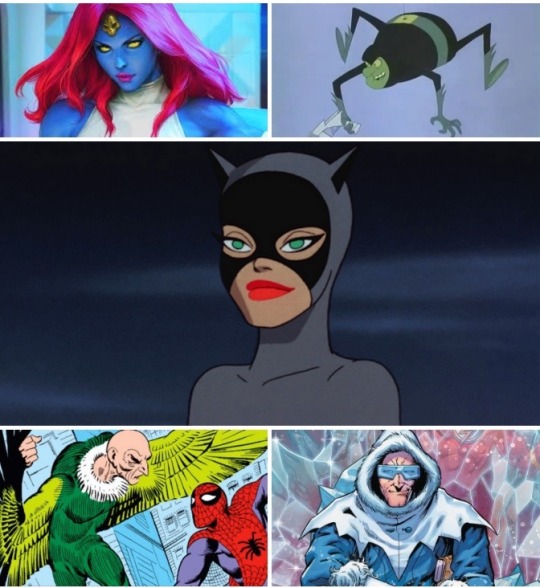
Rogues are outlaws. They take what they want when they want it. Rarely is there an overarching agenda. Rogues do not crave power, they do not want to rule the world. They just enjoy a good time, desire the finer things and will take all that they feel they are owed.
Many factors can go into the making of a Rogue. Circumstances of their upbringing, their appearance, deprivations of different kinds, accidents… all maters that have put the Rogue in a place of alienation from society writ large. In some regards they are victims, perhaps not always innocent victims, but victims nonetheless… and victims with agency. For they have power and the capability to extract whatever vengeance or retribution they feel they deserve.
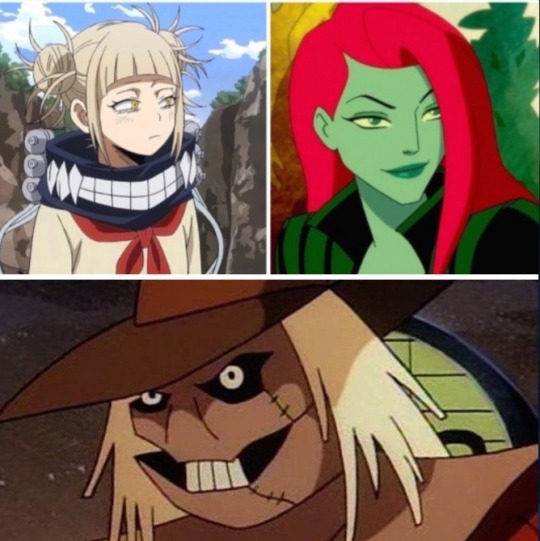
Not all Rogues are victims of misfortune. Some merely possess a sense of entitlement and a desire for adventure. Morality, for better or worse, is just not a central feature in the make up of the Rouge. They see the world around them as a harsh and unforgiving realm and they will take what they want, do as they please, simply because they can. They are not motivated by hate, avarice nor a diminished sense of self esteem. They are supremely independent and the needs, feelings and wellbeing of others are not matters of any great concern.
The super villain Rogue has much in common with the archetype of the Trickster from myths and fable. Tricksters are breakers of boundaries who enjoy disrupting societal principles and norms. These are often supernatural beings whose playful antics act to mock authority and question assumption. Rogues are similar. They too seek to disrupt authority, upset balance and turn social decorum unto its head.
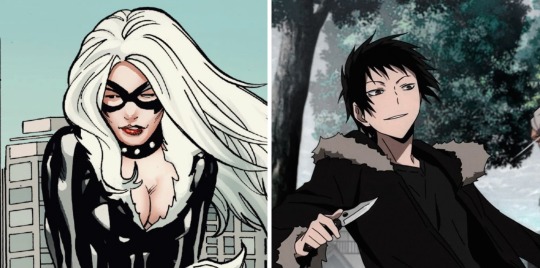
Whereas many Tricksters of lore aim to teach lessons regarding the hubris of mankind, Rogues tend to be much more self-serving in their conduct. Rogues are not agents of chaos, they just want to express their freedom and garner wealth and renown.
While Rogues often prefer to work on their own, they are by no means entirely above joining forces with other villains in working toward a mutually desired goal. Although it is rare, a Rogue may even allow themselves to be employed by a Nemesis, a more diabolical cad whose overarching desires very much do not align with their own. In these situations, the Rogue’s hand is either forced or they are simply biding their time for the ideal opportunity to engaged a well-planned and self-serving betrayal.
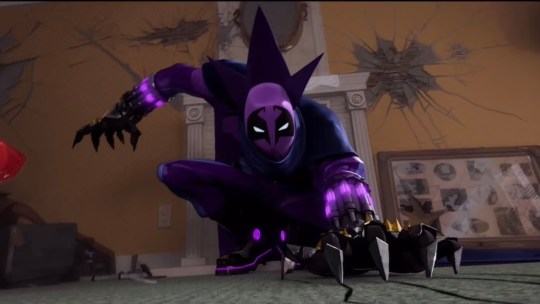
It is the Rogue’s refusal to adhere to societal principles and the law that often brings them into conflict with heroes. And the sympathetic qualities of the Rogue can sometimes cause a hero to question their own beliefs and moral alignment. The Rogue represents a defiance toward the status quo of a given society... that existing state of affairs that maintains social and financial stratification. The status quo is never an entirely fair system, it will always benefit some at the expense of others,...and it can be tempting to forcefully push back against the inequities that exist therein. Indeed there have been many a hero who has fallen under the sway of a charismatic Rogue when made to see said inequities.

And yet Rogues tend to be quite selfish. They have been wronged and use it as an excuse to do whatever they please and put their own needs above all others. In so doing they may end up hurting others in the same fashion they themselves had been hurt. These Rogue could be heroes, yet frequently lack the sense of selflessness that truly makes a hero heroic.
Under the right circumstances, however, the Rogue can find themselves in the role of the antihero... acting as a protagonist despite lacking the traditional qualities most often associated with heroism. This is most often the case when the Rogue’s goals put them into opposition with another villain, particularly a villain much more vile than themselves.
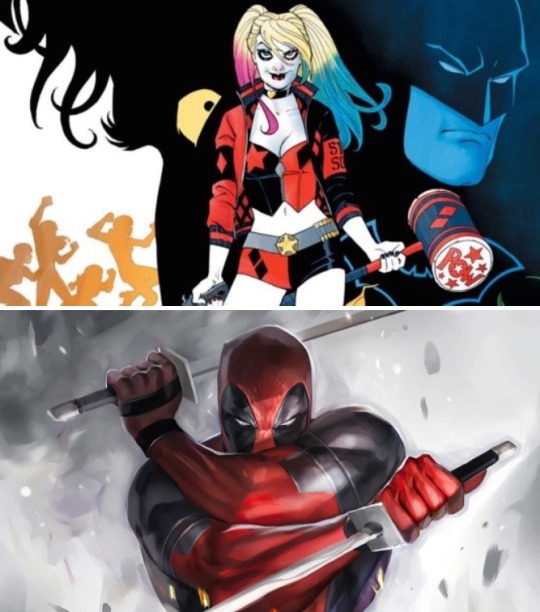
Although some Rogues may fit into the role of an antihero, it does not necessarily make them any less dangerous. The primary characteristic of a Rogue is a rejection of the normative confines of a society. And this can include the confines of morality. The Rogue will resort to murder and mayhem if they deem it a necessity. So beware, my friends, beware.
The Lieutenants
In some regards, Lieutenants are the villainous analog to the hero’s sidekick. They are the primary right-hand operatives of the arch villain… an amalgamation of a partner, field commander, conciliary and moll. They are neither a Nemesis nor a Goon, but something in between.
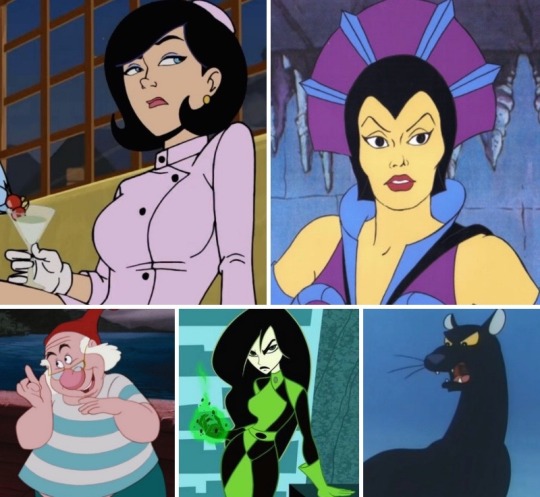
Quite often the Lieutenant will be a good deal more competent, pragmatic and even more intelligent compared to the villain they serve. They could easily be a leader in their own right, yet lack the megalomania that is at the heart of a true Nemesis. What these lieutenants do possess, however, is a deeply seated need to belong... to have a parental-like figure that offers direction and purpose. Some even love the villains they serve and remain at their side for this reason alone.

Lieutenants crave power and respect, they feel a poignant need for validation and this will often lead them to battle against the heroes with vigorous intensity. They can be the most dangerous kind of villain of them all in that they are highly motivated and intelligent as well as desperate to succeed; almost like a child who will do anything to win the approval of a parent.
The neurotic nature of the Lieutenant’s motivation frequently leaves them a good deal less sadistic and malevolent compared to the Nemeses they serve. They are not bloodthirsty or callous; many may even have care for the innocent lives that a dastardly plot might harm. And yet the need for approval acts to outweigh any moral qualms they may possess. That being said, it is not entirely unheard of that a Lieutenant will turn on their leader if the destructive stakes become far too high.

Somewhat akin to the Goon (or even the Rogue), the Lieutenant possesses the potential to turn to the side of good, to be redeemed and become something of a hero. The Lieutenant is highly capable and shrewd, but not above manipulation. Often times they will find themselves in the service of a master who does not have their best interests in mind.
Discovering that they are not as valued by their leader as they may have thought can help the Lieutenant rediscover their sense of honor... a clearer picture of right and wrong. Herein there becomes an increased likelihood that the Lieutenant will turn and aide the heroes... possibly even become a hero themselves.
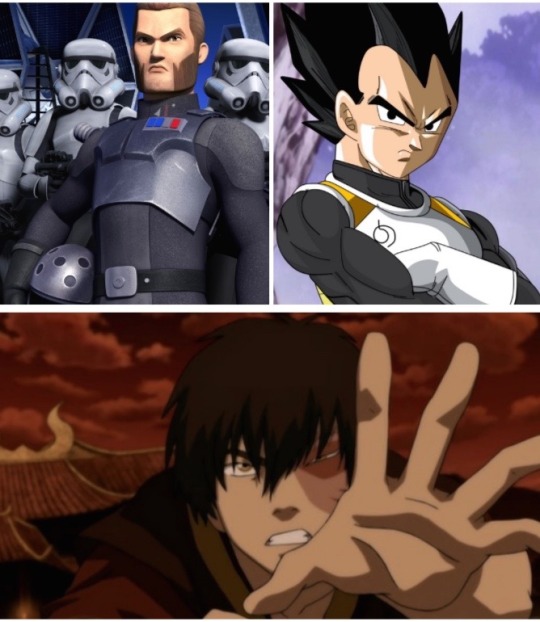
Of course this is not to say that every Lieutenant possesses a staunch code of honor or secret heart of gold. Some are just as rotten and despicable as the cads they serve. They have pled fidelity to their masters and many see the orders they have been issued as on par with a godly and righteous decree.
At the same time that many Lieutenants are unquestioningly loyal, others can be duplicitous. Again, it is not uncommon that a Lieutenant will actually be more competent compared to those they serve. And some possess the ambition to usurp their masters, concocting fiendish schemes to depose their leader, take control and ostensively matriculate to the position of the Nemesis.
This particular dynamic is quite often at play with the ‘secret lieutenant.’ This is something of a subcategory reserved for those second-in-commands who are initially believed to be the primary villain… only for it to be later revealed that there is an entity even more diabolical above them.
Nemeses often cherish their anonymity, preferring to remain a more secretive threat from behind the proverbial curtain. To this extent they need a Lieutenant to stand in as their vassal. It is not uncommon for these proxies to be misidentified as the primary Nemesis. And more often than not, these secret Lieutenants become accustomed to the power they wield... harboring resentment toward the shadowy overlords that they secretly serve. Sometimes they will take action to achieve their ambitions… yet it rarely works in their favor and a Lieutenant’s efforts to usurp their masters will frequently have deadly consequences.

There are reasons after all, that Lieutenants and Lieutenants and Nemeses are Nemeses. The qualities that make for a true Nemesis are as insidious as they are dangerous. They are not so easily overtaken nor replaced.
Nemeses
This brings us to the are the baddest of the bad… the arch foes, the megalomaniacal would-be conquerers whose devilish schemes put us all in grave peril. The pinnacle of villainy; the foil to all things good, selfless, noble and heroic. The Nemesis!
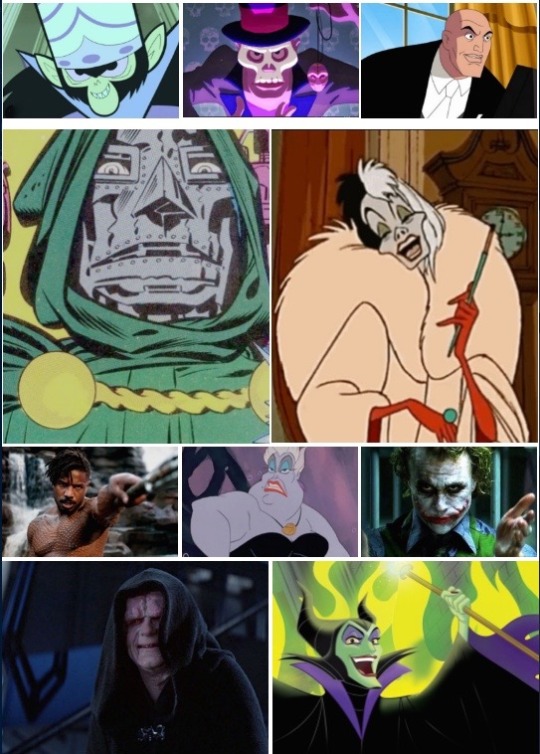
The primary feature to the Nemesis is their motivation. They have a keen notion of how things should be and will stop at nothing toward imposing their will so to bring their goals to fruition. Such goals may be power, conquest, revenge or the acquisition of fabulous wealth (or all of the above). Regardless, the Nemesis believes that fulfilling this goal is a righteous purpose, that it is a destiny ordained unto them by some manner of a divine source.
Most Nemeses do not see themselves as evil. They are the heroes of their own stories and believe themselves to be in the right. Furthermore, any who oppose them represent an effrontery that need be eliminated with extreme prejudice. Theirs is a glorious purpose and nothing nor no one may be allowed to obstruct their destiny.
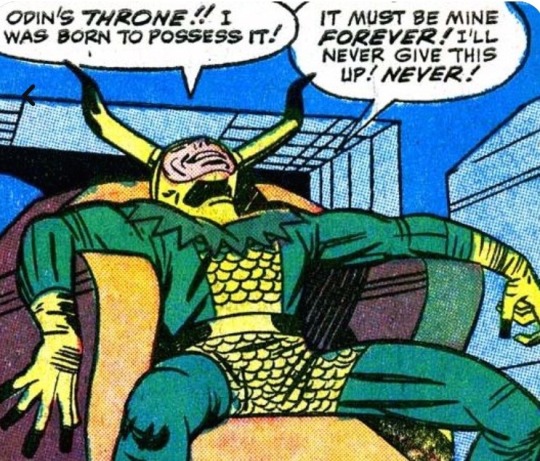
With such lofty ambitions, it is frequently necessary for these Nemeses to create elaborate organizations… secret and sinister syndicates composed of various operatives, agents, minions and flunkies. The Nemesis can be extremely charismatic ideologues and they usually have little difficulty in recruiting scores of cronies and henchmen willing to lay down their lives in the service of a master. Whist some Nemeses have to resort to paying their underlings or at least putting forth the promise that the toiling will result in power and riches, most are simply able to amass a loyal following through their magnetic charm alone.
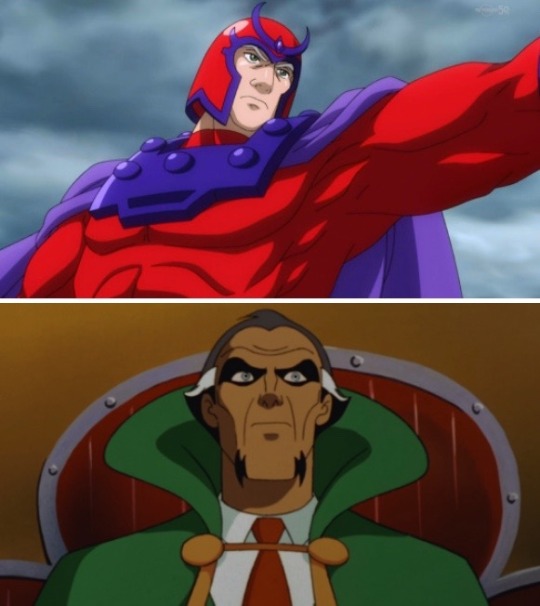
The true qualities of the Nemesis often comes into greater focus in juxtaposition to their arch enemy. The primary foe of the Nemesis acts to define them, highlighting their traits in contrast to their opposite. The more good and pure the hero the more twisted and evil their nemesis. One acts to complete the other like two sides of a scale equally balanced.
Indeed it is not unusual for a Nemesis to become obsessed with their arch foe... so much so that many Nemeses may even hesitate at the opportunity to finally vanquish said foe. They can come to feel actualized by the conflict and may fear a loss of identity were their enemy to be truly eliminated.
Many heroes will have multiple arch enemies, but Nemeses themselves are more exclusive, monogamous in who they see as their principle foe. Furthermore, they can be quite jealous when it comes to the attention of their arch enemies. So much so that it is not unheard of for a Nemesis to lend a hand to their foe in doing away with a third party interloper.
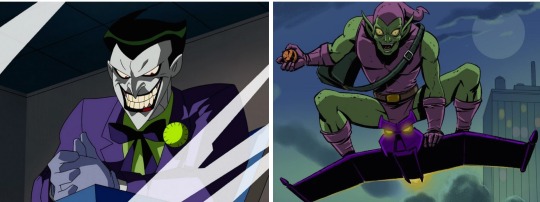
Not every Nemesis is cut from the same cloth. Some can be mere mustache-twirlers… finks who commit evil deeds for the mere sake of it. The more memorable and fully actualized Nemesis, however, is complex and nuanced. There is an element of the inscrutable that can provoke fascination. They are like elaborately colored serpents who elicit equal measures of fear and curiosity.
Despite their despicable acts, the Nemesis can frequently be found to be a rather sympathetic figure. Similar to the Rogue, the Nemesis is rejecting of the societal status quo. They believe they know better, that imposing their will can bring about much needed change. Considering the various inequities and injustices entailed in any society, the promise of change can be very alluring. Tearing something down is always easier than creating something new; and the Nemesis excels at the former whilst offering mere promises of the latter.
Add to this the flamboyant charm and sleek aesthetics of so many super villains and it can all come across as quite alluring. And this attraction can be greatly magnified in those feeling even the least bit alienated by the confines and restrictions of a societal equilibrium.

Most all Nemeses are idealists. Their ideals are twisted and egocentric, but they are idealists nonetheless. In their heart of hearts, these cads honestly believe that the imposition of their self-serving values will bring about their notion of a better world. Even the ones who claim to be nihilists, who say they just want to see the world burn, harbor the desire to harness power and refashion it all in the cast of their megalomania.

The Nemesis is an enjoyable character only to the extent that they do not win, that their schemes remain unfulfilled. And if said plot is at least partially accomplished, the fun part is their histrionic efforts to put down resistance and maintain their tenuous grip on power.
Conversely, Nemeses who too closely parrot real life horrors become unenjoyable entities for the audience. There are plenty of villains who are racists, who commit sexual assault and/or who adhere to repugnant philosophies. These baddies do not fully qualify as super villains. They are just regular villains. Super villains, like superheroes, are figures of fantasy... they are meant to be fun. A true super villain, a real nemesis, may toe the line of real-life horror but should not overstep it.

Not all Nemeses pose the same level of peril. The Nemesis covets a world bent to their whim, yet not all possess the faculties needed to constitute a true threat. Many nemeses are capable, shrewd and cunning; whilst others can be plagued by hubris, myopathy and just plain incompetence. And others still can demonstrate great prowess in one instance and then great blundering in the next. The same passion and unwavering drive that fuels the Nemesis can also lead them to make costly, foolhardy decisions. Nevertheless, a buffoonish villain can be just as captivating and fun as one who is sophisticated and poised.

Of course any summation of the Nemesis, or super villains in general, would be incomplete without addressing the matter of how frequently villainous characters have been used in stories as thinly veiled stand-ins for the queer community.
This is done through a kind of coding… subtle and not-so-subtle hints that the villain is something other than heterosexual. Male villains are often presented as effeminate or flamboyant, female villains as masculine and butch. This is meant to have the effect of making the Nemesis appear more deviant and dangerous. As well as make their ultimate defeat by the hero somehow more satisfying, reinforcing the erroneous notion that being queer is in some way morally wrong.
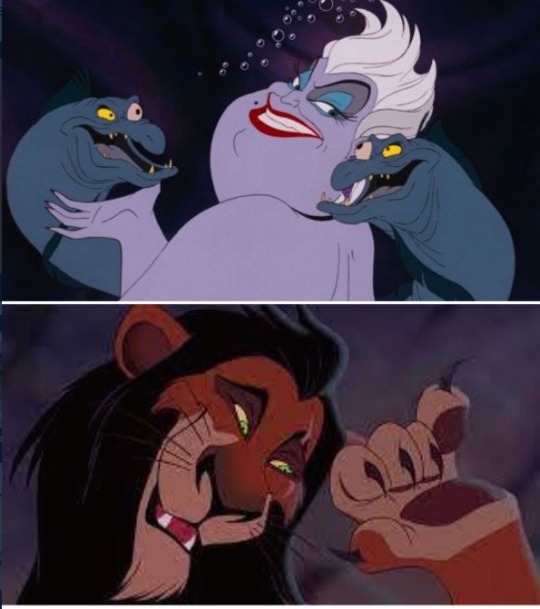
This queer-coding of the villain is not always consciously intended to be homophobic/heterosexist, but it often has that effect; and perpetuates harmful stereotypes about the LGBTQ+ community that can lead to real-world discrimination and violence.
There can be a strange and entirely artificial conversion of machiavellian manipulation and the disrupting of traditional notions of gender. This is the idea that those who are transgender, women who act masculine or men who act feminine, are somehow engaging in a sinister chicanery. That they are temping and coercing the innocent and vulnerable into embracing deviancy.
This is not the only way in which the Nemesis has been used as a means to present social-political agendas. Near countless forms of bigotry and prejudice have been repackaged in the form of a sinister Nemesis. The ‘yellow peril’ style villain depict people of Asian descent as cold, calculating and soulless; whereas the savage ‘witchdoctor warlord’ presents Black and Brown people as primitive, superstitious and godless; and the hook-nosed ‘miserly masterminds’ puts forward Jewish people as conniving, greedy and unscrupulous.
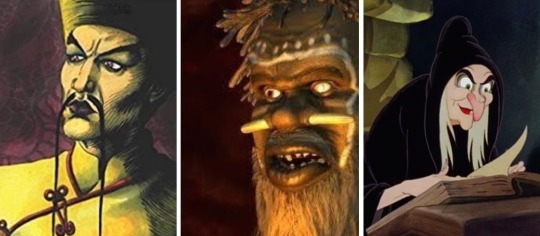
Ironically, as time has gone by, this politicizing of the villain has only acted to make the Nemesis even more intriguing and appealing. In that the Nemesis embodies all that is debaucherous, forbidden and deviant, the hero becomes more and more forced into role of the foil. The hero must be pious, chased and entirely pure of heart. They become flawless and such perfection in the realm of fantasy and wish-fulfillment is rather boring. As the hero becomes more two-dimensional and un-relatable so too is their arch Nemesis made more alluring and empathetic.
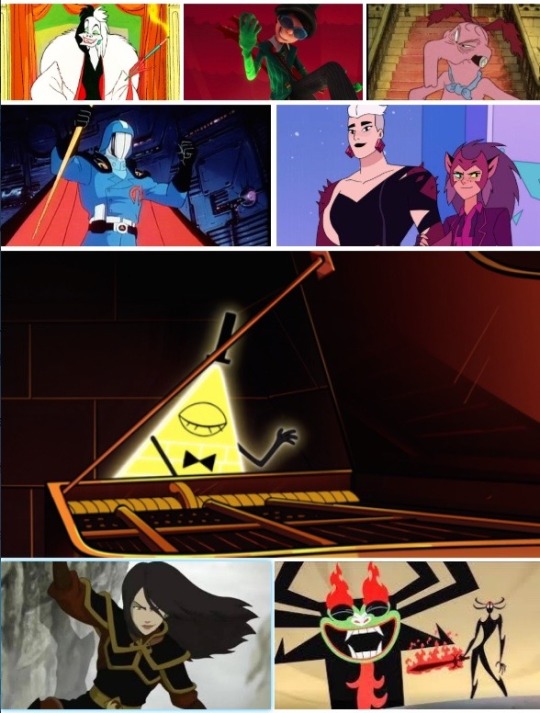
Indeed this has led to heroes gradually become more like villains in an effort to keep them interesting. The sterling white hat of the traditional hero has been traded in for something a slightly grittier shade of gray. Heroes have become more grim and steely, brooding neurotics fueled by past trauma. This may seem like standard fare in the here and now, but it is a base dynamic heavily borrowed from the villainous Nemesis. ...imitation, as they say, is the most since form of flattery.
Thus concludes our brief summation of villainous taxonomy. Does every super villain fit perfectly into one of these five categories? Likely not… but as close a fit as necessary. And certainly there can be movement between the levels: Goons who matriculate to Enforcers, Rouges who go on to become Nemeses. By and large, however, these are fixed positions and most all super villains can be seen as occupying one of these taxonomical genres.
180 notes
·
View notes
Text

some thoughts on this AU:
Damian was first to create a costume. he based it on the League's uniforms at the time, because that was what he was familiar with - over time he incorporated other things, but there's always that base design to his costumes
because of this, most of the Batkids go through a phase where they dress like Damian did/does. Jason is still in that phase and hasn't come up with an adult costume yet
not Dick! he came in knowing he wanted to honor his parents with his costume. although it wasn't the first one he wore, it was the first he went out for a full patrol in
because Duke was there for all of their training, the other Batkids tend to wear a lot of yellow and use yellow as an accent in their costumes. Dick's costume will probably become more yellow over time (altho it's pretty yellow already)
he DID steal one of Duke's costumes to make his cape
Duke did the Damian thing but he's since graduated to his adult superhero persona (still Signal)
Tim's costume is based more directly on Bruce's, but he doesn't go by Batman. he's probably Black Bat or something
Cass has a name based on Signal's callsign. probably Beacon or something. maybe Yellow Lantern bc fuck it
Jason has a name based on Damian's original callsign, which is probably a nickname he got in the League. or else it's based on the fact that he's the magic user in the family
what is this a picture of? I'll be honest I just thought it would look cool. it's probably a training excercise. I assume Duke is supervising it or taking notes and that's why he's standing back and watching. Damian is probably demonstrating something for the rest. since this is obviously Dick's first group session it's either testing the limits of his abilities or teaching him basic skills. they may be QA'ing some simulation instead idk come up with a scenario it's fun
also I've decided because of their black and yellow coloration Gotham collectively calls them Bumblebee Bats, but I do think there'd be intense debate over where Dick fits in the taxonomy
for @dickgraysonweek reverse robins
#look i said something#batman#reverse robins#except I didn't have an idea for Steph so it's Reverse Brucefamily instead. with pictures from all across canon#yes that is Gun Batman don't worry about it. either he doesn't use guns in this version of he's got Jason Trauma whichever#dickgraysonweek2024#I know it's late. I've been sick :( I had a whole time loop thing planned out and everything but I didn't get a chance to finish it#thank you for the Supersons suggestion! I DO like that background it looks fun#my edit
9 notes
·
View notes
Text

The impending disaster is delayed by the rest of the kids going places, doing stuff, beginning by asking around in this quaint little shop. I do like the ”Ghosts will haunt shoplifters” sign. I also spied another Hexas Holdem’ cameo on a table. Just how many of those bloody things did Eda dump in the Human Realm? Or maybe those are unmagical replicas, since the ones Jacob gave away became popular.
Anyways, moving on to this shot, I do notice Gus looking through that barrel of gems. Heh, gems in Gravesfield. I bet that doesn’t happen often. I bet there aren’t a whole lot of teenage criminal masterminds running around there either.
Also, that is a Ness costume to the left there on the wall. Which makes me think the other two ones are references as well, hm… I wanna say the witch costume on the right is from… Little Witch Academia?
I just looked it up, and yup, that’s totally Little Witch Academia. That leaves the middle one, which I have no idea what it could be a reference to. I’m not even sure if that’s a bow, or cat ears. Or maybe this is a Blake Belladonna situation, and it’s actually both.
Oh, and the shop is called The Magic Circle. Insert Engelsfors Trilogy reference here:____________________________.

Oh, now this is a beautiful frame to accidentally pause on. I just had to include it.
That candy that looks like it’s levitating. Willow looking like she’s about to tip backwards. Vee psyching herself up before a boxing match. The librarian experiencing some Grade A secondhand embarrassment. The girl with the Batman logo on her shirt. Amity faceplanting for the second time this episode. Seriously, that can not be good for your face Mittens.
But hey, let’s look on the bright side. Now Hunter and Amity have something else to bond over: facial scar and a broken nose respectively.
And while I’m paused: I also love Willow paying for the costume with a snail, like she’s Pippi Longstocking with her gold coins.
Willow & Gus also both take notice of the statues of the Wittebane brothers. They exchange knowing glances, both of them undoubtedly seeing the resemblance to Hunter… though at this point only Gus has the pieces to begin putting the puzzle together.

And thus one of the shows longest running gags comes to full circle as we finally see one of these demonic giraffes that much fuzz has been made about. Honestly? I don’t see what it was about, the fuzz. This looks fairly normal by Demon Realm standard. Unless the giraffe people were known for being unusually brutal and violent, I’m not sure why the kids are so spooked by this.
I do love this though, because giraffes have obviously been around on Earth long enough to be considered normal animals by humans. And surely someone somewhere at some point would realize that ”Oh shit, these long necked creatures can unfold their faces. That’s weird.”
Even if giraffes don’t do it in front of humans, surely someone dissecting a giraffe would find it. This leads me to believe that yes, it’s weird, but still considered to be an as of yet unexplained quirk in an others normal an unmagical animal.
It was at this point I went on a long tangent about evolution and biology, and I cut that out because this post is long enough as is. Let’s just say that giraffe taxonomy would be a huge pain for scientists in this universe to figure out.
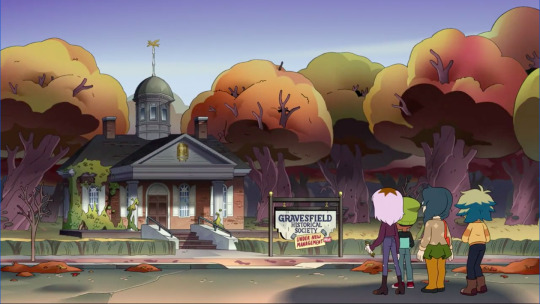
Called it.
I do believe I said so even as far back as Yesterday’s Lie that we would return back to the Gravesfield Historical Society. I also believe I said I dreaded seeing Jacob Hopkins again, for obvious reasons. Though based on the sign, we might be spared that unpleasantness. Good, Philip is already sneaking around, and one crazy person is enough for this episode.
I’m assuming the previous managers of the Gravesfield Historical Society came back from their vacation, found the crazy man who had broken into the building while they were away, and called the police on him.
Even though this is a shot from behind, you can clearly see Vee looking nervous and uncomfortable, and of course she’d be. The last time she stepped foot (eh… tail?) inside this building, all her worst nightmares came true, all at once. She was captured and put back inside a cage. She was going to be cut open and killed by a madman. Her cover was blown to Camila. All in all, it was a rather stressful thirty minutes or so she had in there.

Ey, it’s the fortune teller from Yesterday’s Lie! Based on a comment or two I got, I had a sneaking suspicion they’d appear again, and would you look at that, I was right. It sure feels good.
And not to toot my own horn too much, but the nickanme I gave them back in Yesterday’s Lie was Mira. Which has the same first letter (M), same last letter (a), and the same number of syllables (2) as Masha’s real name. Which might not sound all that impressive, but try guessing the first and last letter, as well as the number of syllables in my (real) name. If any of you are correct, I’ll… be very scared.
So, are you the new new management here, Masha? I’d think not, since, well… you’re what, fourteen? Fifteen, maybe? I know Jacob didn’t set the bar high, but you know it’s a sad state of affairs when an actual child makes for a better manager at a historical society than a grown adult man.
13 notes
·
View notes
Text
pokemon universe kin terminology has got to be pretty fun
like, there's probably nothing like cladotherians in there because pokemon classification is nothing like real world taxonomy. so instead of clades people might be kin with entire pokemon types? or egg groups?
egg group therians could get really interesting since there can be such diversity in a group (like the classic example, skitty and wailord are both field).
actually there is one trainer who could easily be read as a pokemon equivalent of a cladotherian, valerie from x/y "wants to feel like a pokemon" and designed her costume to identify herself as one. fairy type therian girl!!!
there's probably also a term for therians of an entire evolutionary family to distinguish from those who are just one member of the family.
and... how would mythkin or legendkin work when the myths and legends are very much real and present in the world? would it be factkin or mythkin to kin one of the brothers of unova's creation myth? would there be discourse about being kin with legendary pokemon like mewtwo or regigigas where only one is supposed to exist in the universe???
2 notes
·
View notes
Text
Commission/Image ideas of Maximilian Roivas on Jumpchain
Outline of the character
Name
Maximilian Roivas
Gender
Male
Age
Late 40s, Early 50s
Physical
Appearance
Large, rotund, portly white gentlemen with dark goatee, eyebrows and eyes, in a powdered wig wearing a three-piece suit that includes: a black silk damask coat with metallic thread embroidery and brass buttons, a single-breasted plain silk waistcoat, and black silk breeches; A lace cravat; ribbed stockings, dark-colored buckled shoes with a curved French sabre.
Strong limbs, he’s more active and firm than ever. Remarkably manicured.
Scene
Pose
Saber out, looming in his finest outfit, open doctor bag in other hand the Tome of Eternal Space levitating out next and away to his shoulder
Facial Expression
Peering dark eyes with a toothy grin..
Background
N/A, may allude to cadaver or taxonomy research space
Facial Features
Eye color
Dark brown, if not black.
Hairstyle and color
His powdered two roller curls aside wig
or
Natural low bristle cut head. Maybe with signs of sewn scars.


Facial Hair
Low, dark, full bristly beard
Shape of the face.
Oblong just a little too block but broad. His nose is a little ruddy, his eyelids darker than his off-white skin
Clothing and style (KEEP IT SIMPLE)
Base
May choose outfit/look you like; I would be open to a series or collage of multiple different ones.
His iconic Georgian era three-piece suit that includes:
a black silk damask coat with metallic thread embroidery and brass buttons
a single-breasted plain silk waistcoat
black silk breeches
a white linen shirt underneath

Alternate Costumes
A more catsuit like take of the above with exaggerated color with appropriate hat or hood, to give him a vaguely rodent-like impression
A more blended in contemporary outfit, that can’t help but look out of date with a buzzcut, gauged ears, plus elements of Silent Bob as well.
Pale simple full body greyish white or biege clothes, perhaps with surgeons apron, or howie coat, green gel like gloves (alludes to asylum outfit)




Accessories and Jewelry
A lace cravat
Ribbed stockings
Black buckled shoes



Weapons
Curved sabre
Woodstock pistol with lever, looks like a flintlock but has been modified, closer to a dragoon pistol.


Physical
Appearance
5’ 11” 350 lbs, full short dark beard. Natural hard is dark with some greying. He keeps it short. His complexion is off-white, not unhealthy but not the brightest with pink tint to his nose. His eyes and lids look darker. His limbs ar think. He’s a bear or barrel of a man with strong eyebrows. He’s serious and intense always seeming just on the edge of madness
Background and personality
This is the part that is less likely the artist will read, because even with these restrictions, this is still an awful lot of information that will take more than one day for any artist to digest. We’re not dumb, it’s just that we have to actually do the words-to-images reasoning. Feel a bit freer here, since all the essential information should be already written.
Personality Traits
Meticulous and hardworking. He is recovered, rescued from the Asylum, and hit with the guilt of his excesses as a result of ptsd and disbelief. He has a comfort with the bloody and taxonomic. But a sense of propriety from his time
Background History
Once a physician in pre Revolution America his estate at Rhode Island was besieged by monsters in human flesh he was forced to fight and soon went on a rampage seeking them as also autopsied and catalogued them and the humans. Committed to an asylum he condemned society but was rescued in an odd jump by the Jumper and avenged by his descendant Alex. Later assuring her freedom from the Ancients and being taught how to embrace weirdness as not madness and have freedom from his woes while seeking to prevent such torment afflicting his descendants and the similar.
Loved ones
Widowed even before the events of his game his children had to see him committed. He is being cared for by Jumper, Brosus and, oddly, mentored by Ronaldo. He finds himself emotionally intimate with many companions and comfortable as bedmates even as frustrated by his lesser ability
Occupation
Physician, not more a taxonomist than surgeon but focused deeply on xeno-biology and medical treatment and concerns of nonstandard and especially nonhumanoid life
Interests and Hobbies
Very much his job but taking an interest in fashion, cosmetics, and beauty skills
3 notes
·
View notes
Text
{D-Q Feature}: ‘Kunstkamer - a reflection’

‘Kunstkamer - a reflection’
Ian Bell
21 June 2022
The gestural language of human bodies is fascinating even inspiring[1]. It can intimate moods and all kinds of scenarios and dilemmas. Spacing and pacing as well as artful coordination of speed and athleticism may produce especially notable episodes. This language is omnipresent in all human settings whether households or the arenas of work, consumption, sport, art and more. Crucially, it is expressed (and sometimes overtly formulated) at the boundary of inner subjectivities – conscious and sub-conscious - and externalised identities enacted in social settings.
A professionally, choreographed dance work is one example of an overtly formulated and charged distillation of such a language. In this case, the gestural possibilities are amplified when formal cultures of choreography and story-telling are combined with specific narratives, fashions and costumes, sets, lighting, music and film.
In a recent season of the long work, Kunstkamer, the Australian Ballet (AB) has reworked all these elements. First created by four choreographers of the Netherlands Dance Theatre (NDT) in the period up to late 2019, and ‘steered’ by Paul Lightfoot, it was a work designed to celebrate sixty years of the NDT, and the myriad possibilities of dance[2]. Paul Lightfoot describes it as “a beautiful monster”.
After its opening in 2019 in The Netherlands, a European tour was cut short by the covid-19 pandemic. This adds to the significance of the Australian Ballet’s full staging of the work across multiple, Australian cities in the period April to June 2022.
Kunstkamer means an art room or cabinet of curiosities. Renown in Europe from early modern times as collections of unusual or foreign artifacts, especially those yielded-up by nature and exploration, cabinets of curiosities were the forerunners of museums[3]. Indeed, in some cases they furnished the founding collections for the same. For the NDT, a specific inspiration arose from the C18th works of one, Albertus Bela, especially the latter’s four volume book detailing his collection.
Here the ‘cabinet’ metaphor translates to a series of vignettes rather than an integrated, narrative work. These explore different possibilities of dance and gestural language creating a museum-like experience. The set reinforces this with large, grey, moveable, wall-like structures composed of myriad doors that usher dancers and scenes in and out. The set lighting works precisely to support fluid movement between effects and scenes.
The work, then, eschews narrative apart from micro-stories in vignette but adds singing as well as spoken word with allusive and evocative effects. Each scene is supported by different musical extracts. Some parody particular dance forms in a humorous fashion; for instance, stiff, Strauss waltzes that can sometimes be stifling and class-conscious. Others affirm and take seriously more marginal modes of being: the individual seemingly at the end of their tether or, alternatively, facing a long trek on a road to somewhere unclear.
Most ambitiously, and harking back to Bela’s collections and taxonomies, Kunstkamer begins with, and works from, the premise of a shared capacity for bodily movement and gesture across species; as the AB’s synopsis puts it – across “art and science”. This concern with shared capacity is set from the start via flickering video images.
As one would expect there are strong solo performances as well as pas-de-deux. But what impresses here is the strong, collective structure and organisation as individuals and sub-groups merge into very large ensembles for difficult, extended scenes[4].
Pacing and timing here deserve particular notice; they are radically polarised. The second half, for instance, opens with a stylish and funny, immobile performance supporting posing and day-dreaming. By contrast, most of the scenes feel frenetic, and the shifts between them sometimes “violent”[5]. Overall, I was left entranced but also somewhat exhausted and dizzy by the end.
Nonetheless, as whole, the work is inspiring. The sheer number of forms and the array of music are rarely experienced in one work. At times the nerve-endings around my spine were electrified with the senses firing salvos right through my inner world. Kunstkamer, then, achieves its goal of a celebration of dance and artful movement. It inspires us to continue our own journeys of embodied movement with and for others, and for ourselves.
Copyright: Ian Bell
[1] The writer approaches the issues both from an outsider’s aesthetic love of dance language and music, and the experience of movement as a life-long yoga practitioner.
[2] In addition to Paul Lightfoot, the choreographers included Sol Leon, Crystal Pite and Marco Goecke. Lightfoot discusses the steering process in his interview with David Hallberg, Australian Ballet (2022), ‘A beautiful monster|Hallberg in Conversation with Paul Lightfoot’, 19 April, https://www.youtube.com/watch?v=zdCqIq53BT0, viewed 9 June 2022.
[3] Rooms or cabinets of curiosities had mixed reputations. In some hands they were like trophy cabinets representing the spoils of conquest and colonialism. But in others’ they represented an effort to conserve and document nature, and to promote new, less exploitative attitudes towards it.
[4] Intimations of this difficulty are illustrated by the preparatory videos shared with the public: Australian Ballet (2022), ‘Journey to Opening Night|Kunstkamer’ 21 April. <https://www.youtube.com/watch?v=K0vUt23GLNY&t=80s>, viewed 9 June 2022.
[5] This descriptor is Tim Brynes’ in his 4 June 2022 Guardian Australia review: ‘Kunstkamer review: this fiendishly, complicated ballet is astonishing’, https://www.theguardian.com/stage/2022/jun/05/kunstkamer-review-this-fiendishly-complicated-ballet-is-astonishing, viewed 13 June 2022.

Image: Australian Ballet in ensemble in Kunstkamer, ph David Boud.
#australia#australian ballet#dance#ballet#art#auspol#kunstkamer#cabinet of curiosities#netherlands dance theatre#choreography#paul lightfoot#sol leon#crystal pite#marco goecke#david hallberg#ian bell
9 notes
·
View notes
Text
Practices To Help Develop Creativity
Practices To Help Develop Creativity
https://ift.tt/Lm6eyWT
An important factor that people consider when it comes to developing their creativity is imagination. According to Benjamin Bloom, who coined the term taxonomy of cognitive domains, one of the most challenging skills to master is synthesis. This is because people must use all their other cognitive skills to create. Since creating is considered the highest level of thinking, it must be placed at the forefront of learning environments.
To enable students to be creative, teachers should plan and frame learning experiences designed to provide them with the necessary tools and resources to develop their imagination. Here are several practices that successful teachers follow to help their students develop their creativity.
Learning Activities
An effective strategy teachers can implement is creating learning activities designed to allow their students to develop their creativity in exciting and relevant ways. For instance, in the fourth grade, students are given a sample of rocks and tasked with coming up with a list of characteristics of these rocks based on their studied definitions.
In another example, a kindergarten class creates an illustrated book designed to celebrate a different school member or an adult. Each week, the students create a new book that features pages they have drawn. They can depict the person they are celebrating and their thoughts on them.
Celebrate Creativity
Reward and value creativity. In a third-grade classroom, the teacher gives the students’ sidewalk chalk to use as a tool to demonstrate the concept of polygons. They then draw several examples of these geometric shapes on the driveway. The teacher then tells the students to create something they love by transforming the geometric shapes into something they are passionate about. The kids then show their creations to the class and explain why they like them.
Teach Students Different Creative Skills
Teachers can teach their students the other skills they need to be creative. For instance, in a second-grade classroom, the teacher asks the students to investigate the concept of freezing by asking them to come up with an experiment that will allow them to determine what other objects can freeze. The students then come up with a list of objects they would like to leave outside to see if they can freeze. These include water, juice, vinegar, paper, and glass cleaner.
Although some of these items are already considered solid, such as pencils, books, and erasers, paper still makes a list. After completing their experiment, the students discuss their findings and why the paper is stiff. The initial discussion about the freezing experiment has the students developing their communication skills and ability to compromise. The following discussion also encourages active listening and deductive reasoning.
Remove Creativity Constraints
To encourage creativity, remove constraints, and provide the students with a framework they can use to their full potential. For instance, a sixth-grade class creates Halloween costume plays. To make the plays, the students must develop a story that includes all their characters and then present it.
The post Practices To Help Develop Creativity first appeared on Boris Simon | Education.
via Boris Simon | Education https://borissimon.net
September 18, 2023 at 05:08PM
0 notes
Text
A TAXONOMY OF LOVE (2018) BY RACHAEL ALLEN - SPOILER-FILLED REVIEW
For the review WITHOUT SPOILERS, click here. To continue WITH spoilers, begin reading after the cover photo.
Overall Rating: 4 out of 5 stars

I am actually surprised with myself for giving this such a high rating as I am easily very bored with the teen romance novels. Of the few YA romance that I have read in the last year this has been my favorite which was a total surprise! I actually almost gave up reading it in the first 50 or so pages because I found the initial few chapters from Spence’s point of view unrealistic. For some reason I just didn’t feel like the dialogue and thought processes going on in this 13-year-old boy’s head felt accurate to the tween boys I’ve known growing up. There wasn’t enough swearing or boyish grossness. For instance, I feel like he needed a bit of a sprinkle of yucky (belching/ nose-picking/ farting/ name-calling) like the boys in Stephen King’s “The Body” aka Stand by Me (1986), The Sandlot (1993) or Stranger Things (2016) because many boys at this age are generally just pretty gross and obnoxious in my experience. (I grew up tween to teen between 2008-2018 and babysat lots of kids and now I work with middle school and high schoolers…)
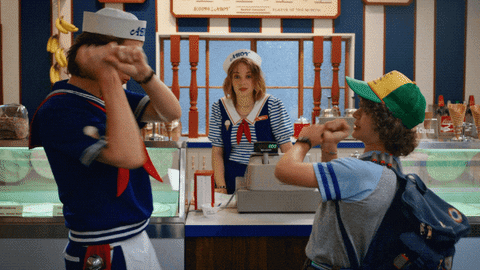
HOWEVER, I think Allen did nail Spence’s dorkiness, which is why I ultimately kept reading because he is pretty adorable and his taxonomies are pretty funny.
Unlike John Green (The Fault in Our Stars, 2012 and Turtles All the Way Down, 2017) and Becky Albertalli (Simon vs the Homosapien Agenda, 2015) who are two of the best teen writers that can accurately display the minds of the opposite sex in my opinion, I feel like Allen struggles a bit with writing Spence’s point-of-view. I found Hope’s p-o-v more realistic (and relatable) as a female, but I think that Spence became more realistic as the book progressed from age 13 to 19. Especially once he hit puberty, I think the romantic stakes and thoughts were more accurate to a teenage boy. Haha. But what do I know? I’ve never been a teenage boy.
Hope reminded me a lot of myself because I’m generally happy-go-lucky, but I had a major emo-phase in high school that really warped my attitude at the time (and admittedly comes out to play occasionally as an adult.) I wish we had more chapters from her perspective. I was bummed out when her sister died. It's hard to lose someone so close to you, especially when they're so young. The only thing I didn't like about Hope was her last name, Birdsong. I think it was just a little too on-the-nose. If we're really going for the "girl next door" she could have just had a basic last name like Smith or Miller.
I really liked all the little parties the characters through for the holidays and the references to Hamilton (2015), Rocky Horror Picture Show (1975), Grease (1978), and Pokémon. Jayla and Spencer's Pikachu and Ash costumes sounded adorable. I feel like Hope’s transition over the story is actually a lot like Sandy’s! Also, the two girls at the Halloween party who were Sandy before and after, such a cool costume idea!
Jayla and Dean were both kind of annoying at times, but ultimately, I think they had good hearts, but were just a little too self-involved for their own good. I really appreciated after Dean went to college and grew up a little and started to stand up for Jayla and Spencer.
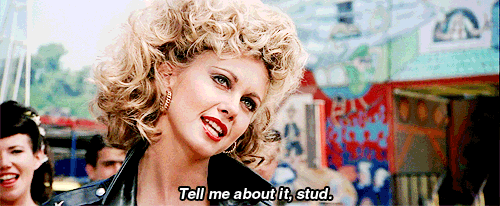
I also like that the book goes over some important topics like racism and the Civil War, disability awareness, bullying, mental health, and using sexual situations as a coping mechanism.
My top three favorite parts are:
The Vice Principal’s Surprise -- I mean DICK CONFETTI? How much better can it get?
2. The Tree Stand in the Rain -- My little heart at all the romance:

3. The Lightning Bugs -- Just such a sweet and magical moment.
Would I Read this Book Again?
Low key kind of want to read it again right now! I hope they make a movie of this!
#book review#spoiler review#ya novel#rhps#rocky horror picture show#tourettes syndrome#disability rights#disabled community#ya romance#teen romance#georgia#grease#pokemon#hamilton#rachael allen#a taxonomy of love
0 notes
Note
so you know about extinct creatures? tell us about extinct creatures etc. what's your favorite one? or group?
hi max. i'm not good at picking favorites, but i will tell you about some extinct creatures i like and know about.
pterosaurs are very cool, basically the closest earth has gotten to dragons. it feels like at least half, maybe more of the pterosaurs named in the last couple decades have been [something]-draco, which i don't blame the paleontologists at all for. i think everyone loves the idea of giant flying reptiles. i do very much love the tall azhdarchids, in fact for one of the projects in my most artsy humanities class in high school i made an azhdarchid costume, with stilts and long crutches and a bamboo pole attached to a backpacking frame with a 6 foot paper-mâché azhdarchid skull. like bats, pterosaurs frustratingly appeared in the fossil record basically fully formed, with no clear links between them and the small weird archosaurs we've identified as their closest relatives.
the fossils i've had the most field experience with are brachiopods and horn corals. brachiopods have bivalved shells like clams et al., but they're completely unrelated. bivalve molluscs have left and right shells which are (generally) mirrored across the plane that separates the two halves, but brachiopods have a top and bottom shell, where the symmetry is more like our mouths. brachiopods are weird sessile filter feeders like half of the creatures in the ocean, and there's barely any animal inside of the shells, they're kinda minimalist that way. horn corals are also called rugose corals, they left horn shaped... cups? with radially symmetric blades inside that the animal would have attached to. they went extinct at the end of the permian, which is very sad because i would love to see one. they probably would have looked something like an anemone inside of a curved cup resting on the sea floor, either alone or in colonies. they could get big, this summer i saw some nearly as long as my forearm. also brachiopods are still around, but their numbers are nothing like they were back in the paleozoic.
ummm dinosaurs are cool. you should look up Amargasaurus, that's a funky sauropod.
paleozoic synapsids are weird, and i should learn more about them.
i think hadrosaurs can get overlooked, because they're not scary meat eaters and they don't have crazy frills or spikes, but they're still cool. many of them had wacky head crests which probably had acoustic properties, and i love a good sound. also some of them got way bigger than i expect, i'll see some size charts and be like "wow, i forgot they were that big". they're not mega sauropod big, but still bigger than any land mammal today (or maybe ever?)
i've done some stuff with shark teeth, and lemme tell ya, fossil shark taxonomy is frustrating, because in nearly all cases it's just looking at the teeth. sharks are tooth making machines, teeth are great at fossilizing because they're so hard, and the rest of the shark is so soft so shark body fossils are really rare. this means that something like megalodon has been placed in dozens of genera, although by now the consensus seems to place in Otodus, with other "mega toothed" sharks. there's some funky stuff about chrono species, tracking tooth morphology changes through time, i trust it but i don't fully get it.
those are some facts i know about extinct creatures, i hope you have enjoyed them
0 notes
Text
People tend to lump the Raimi goblin redesign in with the modern trend of watered-down militaristic villain costumes, which is fair, but-
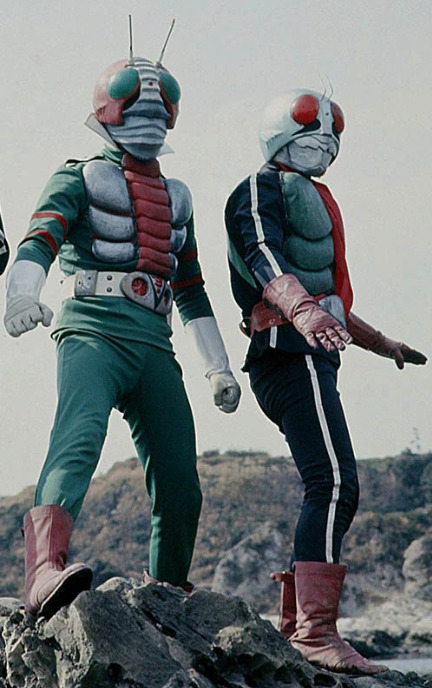
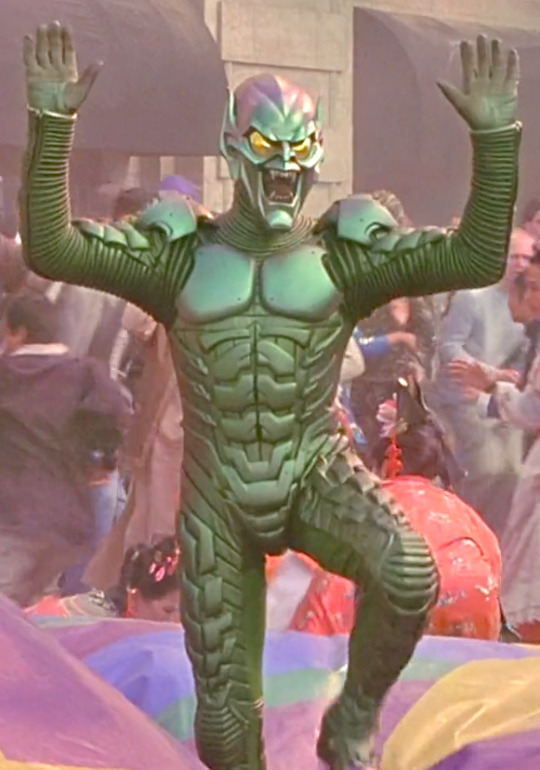

this is some classic-era tokusatsu type costume design
#images from (70s kamen rider and 60s ultraman)#disclaimer I am not a real tokusatsu knower I just think old fx and costuming are neat#it's the color-coded rubbery textured suit and the hard helmet with sculpted features and shiny eyes yknow#green goblin#raimi#costume taxonomy
134 notes
·
View notes
Photo

21 notes
·
View notes
Note
An excuse to roll dice! Excellent! D100 asks: 2, 50, 86, 30, 56, 64
2. What kind of emotions do the stars evoke for you, if any? The ocean, the sky, the moon?
I have complicated feelings about the ocean, because I actively love actually being in water, but everything around it where you have to like... get used to the water, get out and get clean again, probably be on the beach with sand to get there, be in a bathing suit, all of that, I do not. So the ocean brings on strong feelings of want followed by feelings of ...but no. XD No, generally, though, the ocean is calming. Smelling it, seeing it, being near it. The one thing I do kind of miss about Florida is catching sight and scent of the water so often. And literally nothing else.
Stars/moon make me feel rooted, and kind of nostalgic. I worked with Artemis a lot when I was a pre-teen, and I miss that. The sky depends a lot on what the sky looks like. Stormy skies make me feel calm and tired. XD
50. What qualities do you find charming?
I feel like this one’s hard to answer? Charming is a weird word to define and I don’t know if I’d say charmed is a reaction I have often. XD The first thing to come to mind is -- people who are clearly super into what they’re doing and who wants to draw others in, but very respectful of boundaries? Like, someone at an outdoor music event or a drum circle who’s encouraging people to dance with them, but not pushing them if they get waved off. Or someone in full costume at an event playing off people in-character, but not dragging out the bit with people who don’t react.
Seeing people be really into a thing is always great, but when they don’t seem to have as much of a sense of when others don’t want to play along, it gets kind of nerve-wracking -- I just want to sit on the sidelines and watch you, I don’t want to risk being pulled in! But that enthusiasm and enjoyment paired with that display of social skills is a balance that really draws me in.
86. What could you talk about for hours?
So many things. Pretty much anything if I’m feeding off someone else’s interest in it. I can talk for so long about Tarot. Or about witchcraft, or Paganism/Wicca. Musical theater, hoo boy, for so long, or for most pieces of media I’ve been interested in. Fandom as a general topic. Queerness. Mental illness and mental health stuff, also physical illness and disability stuff. Tabletop RPGs, especially if you get me talking about weird indie stuff I know exists and want to try. Also just recommending stuff generally, really, get me reccing and I can just keep going. Personality taxonomy systems. Organizational systems. Like, I talk too much, up until I realize I’m talking too much and abruptly get quiet, so if you got me talking about something I was invested enough in to override the “oops I’m talking a lot”... there are many things. XD
30. If you don't have tattoos, and had to get one, what would you get tattooed on you? Is getting tattooed a big deal to you? If you are tattooed, do you regret any?
I have made multiple lists of things I would get tattooed on me! Mostly quotes/lyrics. I’m not so much a visual person as a words person, so the things that are that important to me are mostly quotes, though I would consider something media-derived for properties that were either majorly lifechanging for me or that I’ve loved for long enough. If I had to get one right this second... don’t be proud, be well is a strong contender. So is tomorrow is coming, & tomorrow needs sponges (as a short form of the full quote, which finishes with: & god, what a fucking miracle it is, the way that we go on). devour the monsters and you can call any place home.
I would probably have tattoos, but I am scared of needles and a baby about pain. XD Also, perpetually broke, but mostly the needles.
56. What (or who) do you daydream about?
Most of the time it’s either stories I want to be writing, or playing out things I’ve watched/listened to in my head. I tend to daydream less about things actually happening to me; if I zone out thinking about non-fiction, I’m probably composing an argument in my head to feel better about something I’m not going to respond to. XD
64. Do you feel like you know yourself very well?
Hahahaha no. Self-identity is a really muddled, confusing thing, and I find it really hard to say much about who I really am at the core. Without getting too deep or too serious, it’s just something I find to be a mess. This is part of why I like labels, personality taxonomy, and finding out how other people think of me. They feel like something to hold onto when the rest of it feels unsure.
( 100 questions game )
#thank you for asking!#there are some really interesting questions in this link so popping in the link XD#if anyone wants to throw me more feel free
2 notes
·
View notes
Text
How To Analyze a Character
Have you ever been reading a fic and found the character is not recognizable that causes you to say “I don’t know who that is in that Marinette suit but that’s not Marinette.”
Or when you’re writing there’s that one character you need and you just can’t get inside their head to save your life.
This essay is going to delve into how to analyze characters and how they work in stories. It will help you both articulate why you do or don’t like a particular character or their interpretation, and help you in your own writing of that character.
Characters, as well as other elements of a narrative, can be broken down into collections of recognizable elements often called “tropes.” (For the comprehensive taxonomy see tvtropes.org.) These commonly recurring literary and rhetorical devices, motifs or clichés can be combined in unique ways. They exist as recognizable and namable concepts because the same patterns are used over and over again in the creation of stories. We can use named tropes to describe what we are seeing in one story and relate it to other instances of the same phenomenon.
The advantage of recognizing the tropes that describe a character means that we can import into our understanding of them all of the other instances of that trope we have come across, and then compare and contrast these characters.
For example, both Chloé and Adrien exhibit the “Well Done, Daughter/Son!” Girl/Guy trope, desperately seeking the approval of a distant and withholding parent. (Faramir in the Lord of The Rings and Shinji Ikari in Neon Genesis Evangelion are also prime examples.) Knowing that they are both participants in this kind of relationship we can see how it plays out differently.
Gabriel seems like a deliberate ass, but occasionally manifests approval as when he played the duet with Adrien before sending him off to the Kitty Section concert in Capitan Hardrock. Audrey is entirely un-reflexive in her horribleness, dismissive rather than demanding and only ever recognizes Chloé’s worst feature as admirable. Kagami is also a “well done daughter!” girl and it informs how she relates to Adrein, Chloé, Marinette and Ladybug, providing both for character connection and thematic contrast.
On the production side, tropes can be used deliberately to construct a character to achieve a particular purpose. Adrien was created using the standard tropes of the fairy tale princesses beauty, musical talent, kindness to all creatures (even Chloe), kept looked up by an unloving parental figure. By creating a stereotypical Disney princess but swapping the gender it causes us to think harder about the assumptions we make about Princesses.
Symbols work the same way. We use symbolic images and language in media because it allows us to reference all the other ways and places that symbol is used. It becomes a shorthand for much bigger units of meaning. Pure originality would be completely unintelligible.
For example, Marinette displays two flower motifs on a regular basis. One is the cherry blossom spray across her shirt. Commonly this is associated with both love and passion, as well as purity and transitory beauty. In China, the last three are more closely associated with the Plum blossoms that decorate her purse, chair, and diary. Along with the additional significance of perseverance and hope, we can see that her dreams for the future, however heard she works for them, may not turn out as she plans.
The cherry blossom, in China, is a symbol of passion, strength, and feminine power and sexuality. As Marinette has this symbol peeking out from behind her jaket on the left side of her shirt, it represents how her civilian persona hasn’t fully come into the power she displays as Ladybug. Adrien’s kwami was chosen to be a Black Cat specifically to call up all our associations with them and bad luck as a counterpoint to Ladybug and her Lucky Charm.
Pikachu, I Choose You!: Artistic Decisions
You would think this wouldn’t need to be said but remember, remember, remember: these fictional characters are not real people. Why does that matter? Because everything you see on the screen or on the page is the result of a choice made by the writer or artist.
Images and dialogue may be selected deliberately, thoughtfully, thematically, instinctually, carelessly, haphazardly, or stupidly, but they are there because the authors and illustrators and creators selected them to be there.
Remember that the characters only exist to serve the story and everything about them ideally should serve to move the story toward its conclusion.
This is especially pertinent in an animated–and especially a computer animated–show because everything has to be made specifically for the show and they are expensive to make(MLB costs ~$460,000 an episode). That’s why you get only one outfit for most of the characters, except when absolutely necessary.
Saving their production budget for other things is why Theo Barbot has all of the odd jobs in Paris, there seems to be only one cop, Sabrina’s dad, and Alec and Nadja are the only people on TV. If you take a look in Bubbler, the first episode aired in the US, you can see that the school, the bakery, the hotel, and the Agreste Manor are all within one block of each other.
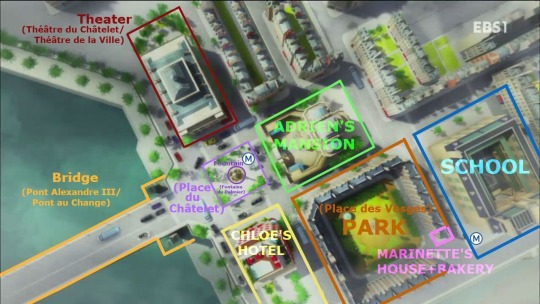
CallMeDale posted this to the Miraculous Fanworks Discord. Source unknown. Image originally from Bubbler.
What this production cost means for analyzing a character (or anything else) is that everything we see in a visual medium is important. Everything about a character has been picked for some reason. How they look, how they move–even how they stand says something about who they are as a person, who they are in their relationships, and who they are as an element of the story.
I did a fairly comprehensive essay on Chloé as a character so I want to walk through some of the things I looked at in order to write it.
Character at First Sight:
First impressions are vital. Because Marinette is picked to be our eyes as the OP starts (“In the daytime I’m Marinette,”) we know she is supposed to be our heroine and point of view. Everything that happens after that is to be judged in relation to her. The first time we see Chloé in the show is a whole 5 seconds into the opening, when she and Sabrina walk past a face-planted Marinette. Immediately afterwards, Chloé runs back in to glomp Adrien and push Marinette out of the way.
From these few brief seconds we know that she is both rich and domineering, Sabrina is walking just behind her with a huge designer purse and bookbag, obviously in a subservient role. Chloé laughs at Marinette, which establishes her as an antagonist to the Heroine. Chloé pushing Marinette out of fram when she comes back shows that she exists in part to block our Heroine from Adrien, our Hero, whose expression shows he really doesn’t appreciate the attention.
Not even three seconds of screen time and we already know who Chloé is in relation to three people: Marinette, Adrien, and Sabrina.
How much time a character gets in the beginning of a story also sets up how much brainspace we allocate them and our expectation of their importance. This is one reason I prefer Bubbler as the “first episode’’ (US viewing order) over Stormy Weather (South Korean/International Viewing order). Stormy Weather spends the first few minutes on Aurore, Mirielle, and Alex before getting to Mari, Tikki, Manon, Alya, and Adrien. Bubbler in the same first minute sets up Marinette, her parents, Adrien, Alya, Chloé, and Nino and all their relationships.
By choosing your descriptions carefully you can get the reader to think of other things without directly mentioning them. Ladybug’s costume, mode of travel and name all callback to Spiderman (she even does the upside down hang in Dark Cupid), and even though the iconic phrase “with great power comes great responsibility,” is never stated its influence is felt in the persistent characterization of Ladybug as ‘all business’ in fic, even though she is more playful in canon. Master Fu is modeled after classic inscrutable mentor Mr. Miyagi from the original Karate Kid movies, it gives him an air of perhaps more wisdom and knowledge than he actually possesses.
Come on Let’s Vogue: How the Look of a Character Informs Us
Now let’s look at what we get from the elements selected for Chloe’s character design. Slender, pale, almost-white blonde hair, sunglasses on the top of her head, lots of blue eyeshadow, yellow jacket over a black and white striped shirt, white capris and black and white flats. All of this says she is the top of the social heap at her school. Combined with her glomping and trying to kiss Adrien and we can guess she is–or at least wants to be seen as–romantically “experienced”. Yellow is a happy color, it’s what makes a printed picture look bright. Often, though not always, it is associated with success and general goodness (i.e. a heart of gold) so she is initially portrayed as a person who doesn’t have any cares. White jeans and shoes point to both her status as someone who doesn’t have to work and a certain level of naivete.
But she also has this very gothy studded belt around her hips. It is very obviously not holding up her pants. This hints at the darker emotions and experiences at her core. The black and white stripes of her undershirt hint at the way she is held prisoner by her past.
Because we have been set up to see Chloé as the spoiled,rich bitch with everything she could want, when the facade cracks and we see just how awful her mother is it hits all the harder for us. Chloé’s invulnerable image is destroyed.
“What’s in a Name?”: Tagging as Character creation
Names are also a good starting place for getting into a character.
Bourgeois comes layered with the connotations of wealth, but not too much, and shallow conformity. Chloé is derived from the Greek Khlóe, or ‘young green shoot’ (of a plant), which can also be interpreted as meaning 'blooming.’ Khlóe is an epithet, or nickname, for Demeter in her aspect of the Lady of Summer. We know the writers know and are thinking of these meanings because of these lines in Sandboy.
Nightmare Adrien: Marinette, for your birthday, I’m going to buy you flowers—
…
Nightmare Adrien: —hortensias, roses and Chloés. (Marinette shrieks)
Not only does her name sound like that of a Homecoming Queen/Cheerleader/trust fund baby, but it also indicates she is immature but with potential to become something more.
Queen Bee is also laden with meaning as it is a term used to describe girls in their teens who are at the top of their social pecking order (see Queen Bees & WannaBes). It perfectly describes bothe how Chloé acts but also how she perceives herself.
The Things You Do to Me: Character Action
Characters in a story are what they do and more importantly why they do what they do. If Marinette becomes Ladybug for the first time because someone needs saving (first Ivan, then Alya), and Adrien becomes Chat Noir in order to escape the gilded cage that is his house, Chloé dons the Bee miraculous in a desperate (and unsuccessful) bid to catch her mother’s attention.
Attention seeking is part of every subsequent time that her hero persona appears in the story. Consider the implications of the fact that the signal on her roof is a Bee signal, not a Ladybug signal. The gestursal tic she has of always examining her nails, often with the other arm folded over her chest, is a visual shorthand for both her self-absorption and that her unpleasant personality is a defence mechanism.
Dialogue clues are also important, especially things that come up more than once. Chloé’s persistent lack of remembrance of the Concierge’s name (Jean-whatever) shows her to be dismissive of the people she believes to be “beneath her” which becomes horribly ironic when we find out her mother doesn’t seem to remember her name. That Marinette is always Dunain-Cheng, emphasizing her parents status as tradesman and that Marinette is not pure French operates as a persistent put down.
Chloé is a Hero with an F in Good, primed by the writers for the Face–Heel Turn which happens in Miracle Queen. They telegraph this event by the choice to echo her “once a monster always a monster,” line from Stoneheart, in the S3 midseason Stormy Weather 2. There she mocks Aurore with “once a villain always a villain.” Highly ironic given the number of times Chloé has been akumatized and prompted it in others. Her bad heroing serves to show that actions and motives are not always aligned and to highlight the selflessness of the other heroes.
A great example of showing character through dialogue is Nino’s conversation with Gabriel in Bubbler. Nino was given a very distinctive, persistent, and casual speech pattern (“dude” in English), It’s so distinctive that Alya immediately recognizes that he is Carapace. The fact that he makes an effort to suppress it when he is trying to persuade Gabriel to let Adrien have a birthday party shows how much he cares about giving Adrien this gift. It’s part of what establishes him in our minds as such a great friend for Adrien (King of Bros!). Giving characters individualized vocabularies and speech patterns is one of the best ways to help distinguish them in both your, and the reader’s mind.
All Together Now!
As you read and experience more stories, you will recognize more and more common elements across the characters, places, events and ideas that make up the stories you read. As you recognize these building blocks, and how they can be combined and manipulated, they will help you understand better why certain characters do what they do in the story. You can then deliberately select them as you create your own stories to highlight desired themes, set up conflicts or call cultural resonances to your readers’ minds. Remember what you write is a conversation between you, your reader, and the world around you. The more of the world you can bring into your writing the deeper it will impact your readers.
22 notes
·
View notes
Text
Hypothesis regarding anime as a genre: like a DSM diagnosis, not all (or even almost all) of these criteria are necessary to definitively make something “anime”; but the more features a work has the more central an example of anime as a genre it is likely to be.
pop culture references or literary allusions that don’t seem to serve any deeper thematic purpose
worldbuilding that abides by the “rule of cool” (but makes absolutely zero sense upon any sustained examination)
extremely elaborate fight scenes with contemptuous disregard for the laws of physics
absolute apathy toward any kind of science fiction/fantasy distinction
heavily using costume design to establish and distinguish characters
upbeat, pop music opening theme with only a sort of tenuous connection to the content
names--characters, places, groups--are all kind of... off, in a way I find hard to describe. This may be a translation thing.
gratuitous use of the German language
(as a secondary feature) specific visual elements like multicolored hairstyles
Furthermore, I conjecture that it is neither necessary for something to be Japanese, nor indeed animated, for it to be a central example of “anime” as a genre, so long as it depends sufficiently on the required tropes. Moreover, a work could be Japanese, animated, and executed in a thoroughly anime art style, but if it lacked any traits along the lines of those above (not at all an exhaustive list, btw), it would not be anime according to this taxonomy.
#ATLA: not at all anime#FLCL: extremely anime#Cowboy Bebop: somewhat anime#Planetes: possibly far too hard SF to be actual anime#the entire final fantasy series: extremely anime#indeed most JRPGs i assume
79 notes
·
View notes